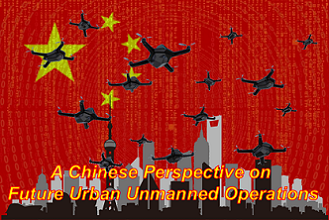[Editor’s Note: With President Volodymyr Zelensky, his redoubtable Ukrainian Defense Forces, and courageous Ukrainian citizens putting up a staunch defense in depth of Ukraine, Russia has had to pivot from its initial strategy of quickly seizing Kyiv and decapitating Ukrainian government’s center of resistance. It now appears that Russian forces will focus their destructive might on reducing Ukrainian urban centers, à la Aleppo. While Army Mad Scientist will continue to glean and share insights from this conflict — “where urban strategies are critical,” per MAJ John Spencer (USA-Ret.) in last week’s podcast and blog post — we thought we’d turn our focus to China, our pacing threat, and tee up an insightful post from last year exploring how their military strategists are thinking about the thorny challenges of urban operations. Revisit how China proposes to tackle what they describe as “warfare in hell” by incorporating swarms of unmanned autonomous systems in conjunction with intelligentized forces in this excerpt from the January 2021 edition of the OE Watch (pp. 33-34), published by the Foreign Military Studies Office, TRADOC G-2 — Enjoy!]
OE Watch Commentary: As the global trend in urbanization continues to grow, Chinese military thinkers envision urban combat becoming a more common form of military struggle in the future. The first article, published in Weixin, on China’s social media platform WeChat, describes the operational environment within urban settings as fraught with challenges. For example, poor visibility, physical barriers, and limited maneuvering space within cities greatly reduces the effectiveness of traditional reconnaissance efforts. Civilian casualties occur more frequently. Recognizing these and other challenges faced in potential urban operations, two Chinese military theorists 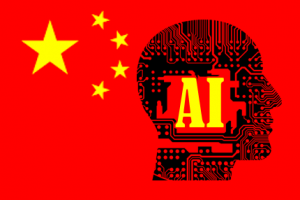 recently published an article arguing that the best way to gain the advantage in future urban operations is to integrate unmanned, AI-intelligent weapons systems. The Chinese refer to these systems as “intelligentized.”
recently published an article arguing that the best way to gain the advantage in future urban operations is to integrate unmanned, AI-intelligent weapons systems. The Chinese refer to these systems as “intelligentized.”
The second article, published by Qiushi, a bi-monthly political theory periodical under the Central Party School and the Central Committee of the Chinese Communist Party, describes a number of urban scenarios. For example, according to the authors, while engaging the enemy from either outside a city or while inside a city, UAVs or swarms of UAVs might coordinate with aerial infiltration and reconnaissance forces to gain a complete picture of the adversary. While conducting operations to maintain stability within an urban setting, the authors envision 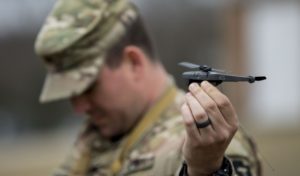 man-portable small and micro-sized UAVs conducting infiltration and reconnaissance within enclosed areas and covertly tracking targets of interest.
man-portable small and micro-sized UAVs conducting infiltration and reconnaissance within enclosed areas and covertly tracking targets of interest.
They also see unmanned platforms as being fully self-sufficient. For example, a self-repair mode would be “autonomously activated” once a certain degree of damage to the equipment is sustained. Or autonomous support platforms might be programmed to seek out candidates to provide “rapid regeneration of equipment on the battlefield.” These and other measures would ensure uninterrupted combat operations.
Based on the concluding paragraph, however, there is still a lot of progress that needs to be made before these types of scenarios can become a reality. For example, China still needs to develop many operational concepts required to succeed in urban operations, such as maneuvering operations in enclosed areas, area-denial operations with UAVs on defensive-duty, operations to control cognition, and decapitation and sabotage operations that use drone swarms. They also still need to develop “a core algorithm model for urban operations.” They need to master the technology of fully integrated, complex communication networks that will connect air, space, and ground. At times networks might be impeded by physical obstacles. Finally, the authors are urging China to speed up the process of integrating the mechanized, informationized, and intelligentized systems, while increasing the proportion of unmanned equipment and the quality of “intelligentization.” End OE Watch Commentary (Cindy Hurst)
“Urban operations are called “warfare in hell.” The basic way to resolve this difficult problem is to utilize and integrate unmanned, intelligentized weapons systems throughout the entire process and with all elements…”
Source: Hai Xiaoying, “深度:空地无人装备协同应用现状与趋势 (In Depth: Current Situation and Trends of Coordinated Application of Unmanned Aerial and Ground Equipment),” Weixin, 10 January 2019. https://xw.qq.com/cmsid/20190110B0XKXC/20190110B0XKXC00
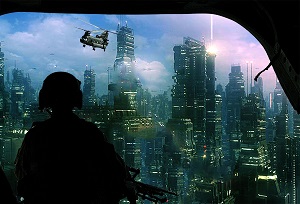 The continuous advancement of urbanization on a global scale will make urban combat a common form of military struggle in the future. From the urban conflicts in the Middle Eastern countries in recent years, it is not difficult to see that in the urban environment with poor visibility and limited maneuvering space, traditional reconnaissance means have obvious “urban ailments”: the widespread application of reinforced concrete occlude and attenuate electromagnetic waves, greatly reducing the effectiveness of traditional reconnaissance equipment; and it is difficult to maximize the effectiveness of the currently common reconnaissance equipment, such as reconnaissance aircraft (mostly fixed-wing aircraft), in the urban environment.
The continuous advancement of urbanization on a global scale will make urban combat a common form of military struggle in the future. From the urban conflicts in the Middle Eastern countries in recent years, it is not difficult to see that in the urban environment with poor visibility and limited maneuvering space, traditional reconnaissance means have obvious “urban ailments”: the widespread application of reinforced concrete occlude and attenuate electromagnetic waves, greatly reducing the effectiveness of traditional reconnaissance equipment; and it is difficult to maximize the effectiveness of the currently common reconnaissance equipment, such as reconnaissance aircraft (mostly fixed-wing aircraft), in the urban environment. 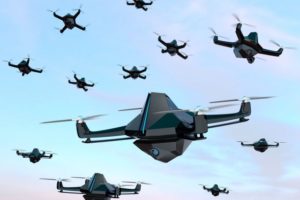 At the same time, unintended consequences, such as civilian casualties, occur frequently in actions that focus on eliminating specific targets. Therefore, the rotary-wing UAV capable of vertical takeoff and landing, agile maneuvering, and low-speed flight has great application potential in urban reconnaissance. It will enhance the urban combat capability of ground forces when it collaborates with the UGV, which has a larger ammunition payload capacity, to carry out firepower attack missions.
At the same time, unintended consequences, such as civilian casualties, occur frequently in actions that focus on eliminating specific targets. Therefore, the rotary-wing UAV capable of vertical takeoff and landing, agile maneuvering, and low-speed flight has great application potential in urban reconnaissance. It will enhance the urban combat capability of ground forces when it collaborates with the UGV, which has a larger ammunition payload capacity, to carry out firepower attack missions.
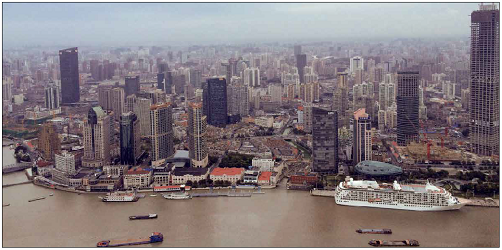
Source: Chen Wenchao and Wen Xiaopeng, “未来城市无人化作战怎么打 (Conducting Urban Unmanned Operations in the Future),” Qiushi, 3 November 2020. http://www.qstheory.cn/qshyjx/2020-11/03/c_1126691646.htm
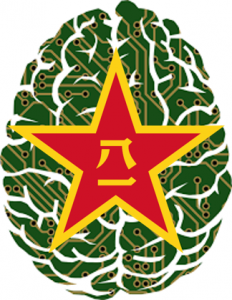 Urban operations are called “warfare in hell.” The basic way to resolve this difficult problem is to utilize and integrate unmanned, intelligentized weapons systems throughout the entire process and with all elements, and to creatively design plans for urban unmanned operations, thereby minimizing casualties and improving operational efficiency.
Urban operations are called “warfare in hell.” The basic way to resolve this difficult problem is to utilize and integrate unmanned, intelligentized weapons systems throughout the entire process and with all elements, and to creatively design plans for urban unmanned operations, thereby minimizing casualties and improving operational efficiency.
Reconnaissance can be continuously carried out with three-dimensional infiltration. [Urban unmanned operations] must be able to differentiate the needs for key intelligence in nearby and distant areas, to infiltrate high-risk urban areas from high and low positions, and to complete the integration and dissemination of information that incorporates both rough and detailed [intelligence]. When engaging the enemy from outside of the city, a swarm of UAVs can coordinate with aerial infiltration and reconnaissance [forces] to generate in real time a three-dimensional hologram of the enemy situation, thereby providing support for making decisions with respect to categorizing missions, deploying forces, and formulating tactics. When assaulting the enemy while inside the city, unmanned reconnaissance 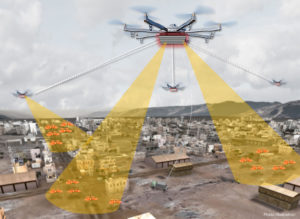 platforms can coordinate with infiltration and reconnaissance [forces] to identify the enemy’s forces, weapons, fortifications, and concealed threats, thereby providing a direct basis for organizing forces, coordinating attacks, and conducting defenses with precision. When controlling the stability of an area, man-portable small- and micro-sized UAVs and robots can conduct infiltration and reconnaissance within enclosed spaces, obtaining [information] on building structure, identifying dangerous targets, and carrying out silent and concealed tracking, thereby providing precision guidance for search and mopping-up operations and anti-terrorism and anti-riot operations.
platforms can coordinate with infiltration and reconnaissance [forces] to identify the enemy’s forces, weapons, fortifications, and concealed threats, thereby providing a direct basis for organizing forces, coordinating attacks, and conducting defenses with precision. When controlling the stability of an area, man-portable small- and micro-sized UAVs and robots can conduct infiltration and reconnaissance within enclosed spaces, obtaining [information] on building structure, identifying dangerous targets, and carrying out silent and concealed tracking, thereby providing precision guidance for search and mopping-up operations and anti-terrorism and anti-riot operations.
Clearly, to generate unmanned combat capabilities in urban areas, we must develop innovations in operational concepts such as maneuvering operations to breach walls in city blocks, mopping-up operations in enclosed spaces, area-denial operations with unmanned [platforms] on defensive duty, quarantine and blockade operations in urban areas, operations to control cognition, and decapitation and sabotage operations utilizing swarms. We must build a core algorithm model for urban operations, forming mobile  clouds, data pools, and rules databases that are digitalized, standardized, and universal. We must master key technologies that are capable of adaptively building networks in the air, in space, and on the ground, sharing communications and linkages beyond visual range, and achieving the integration of reconnaissance, communications, and command, recognizing that such technologies must be able to operate in urban areas where there are more obstacles and in complex network and communications environments. We must accelerate the pace of integrating the “three processes” [mechanization, intelligentization, and informatization] and increase the proportion of unmanned equipment and the quality of intelligentization, forming a range of unmanned equipment that combines [capabilities] at high and low [altitudes], at long and close [ranges], in large and small [scale], with open and closed [designs], and for combat and support [operations].
clouds, data pools, and rules databases that are digitalized, standardized, and universal. We must master key technologies that are capable of adaptively building networks in the air, in space, and on the ground, sharing communications and linkages beyond visual range, and achieving the integration of reconnaissance, communications, and command, recognizing that such technologies must be able to operate in urban areas where there are more obstacles and in complex network and communications environments. We must accelerate the pace of integrating the “three processes” [mechanization, intelligentization, and informatization] and increase the proportion of unmanned equipment and the quality of intelligentization, forming a range of unmanned equipment that combines [capabilities] at high and low [altitudes], at long and close [ranges], in large and small [scale], with open and closed [designs], and for combat and support [operations].
If you enjoyed this post, check out War in Ukraine: The Urban Fight is Happening Now and the associated podcast, with MAJ John Spencer (USA-Ret.)
… read LTC Amos Fox‘s On Sieges, published by our colleagues at RUSI
… learn more about the PLA’s efforts to harness the power of autonomous systems in the following:
Insights from the Robotics and Autonomy Series of Virtual Events post and the associated webinar content (presenter biographies, slide decks, and notes) and videos
China: “New Concepts” in Unmanned Combat and Cyber and Electronic Warfare
The PLA: Close Combat in the Information Age and the “Blade of Victory”
… read about the PLA’s “intelligentization” efforts in:
China: Our Emergent Pacing Threat
“Intelligentization” and a Chinese Vision of Future War
China’s Drive for Innovation Dominance, derived from proclaimed Mad Scientist Ms. Elsa Kania‘s People’s Liberation Army (PLA) Human-Machine Integration briefing, presented at the Mad Scientist Bio Convergence and Soldier 2050 Conference on 9 March 2018 at SRI International‘s Silicon Valley campus in Menlo Park, California.
… and explore the challenges of military operations in dense urban environments further in:
Content from the Current and Future Operations in Megacities Conference, 16-19 July 2019 in Tokyo, Japan; the Multi Domain Battle (MDB) In Megacities Conference, 3-4 April 2018 at Fort Hamilton, New York; and the Megacities and Dense Urban Areas Conference, 21-22 April 2016 at Arizona State University, Tempe, Arizona. Videos of the presentations from each of these conferences may be accessed here, here, and here, respectively.
Dense Urban Environments (DUE): Now through 2050
Dense Urban Hackathon – Virtual Innovation
TRADOC Pamphlet 525-92-1, The Changing Character of Warfare: The Urban Operational Environment
Military Implications of Smart Cities, by Alexander Braszko, Jr.

